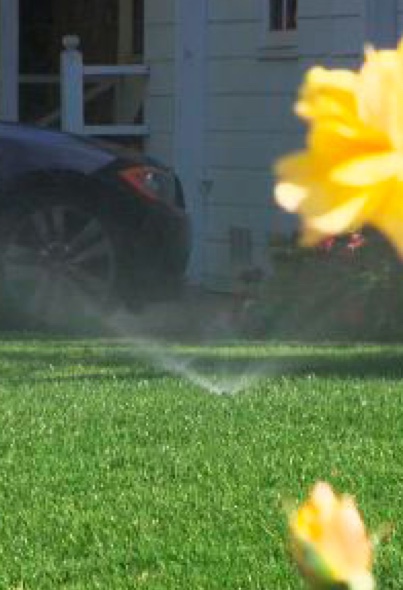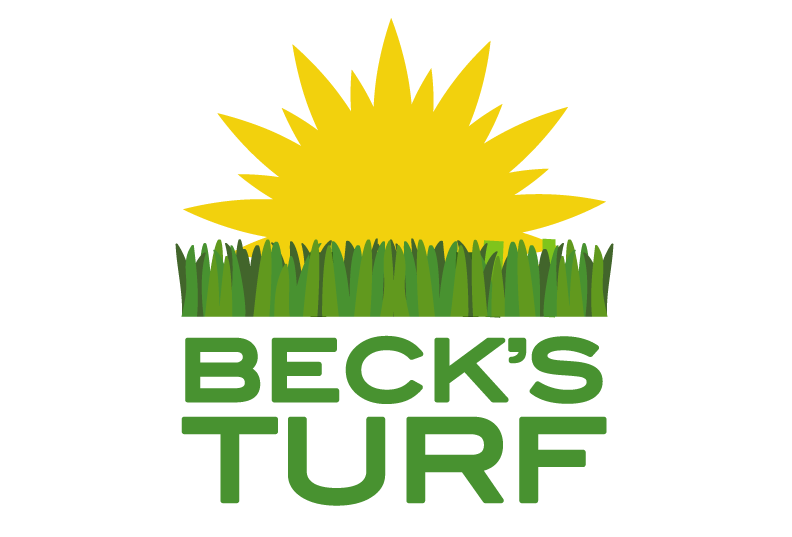Watering Home Lawns

During the growing season, most lawns will do very well with a maximum total of one inch of water a week, coming either from rain or applied water. Soil conditions may dictate that the amount be applied in two settings, approximately two or three days apart. This amount of water, properly applied, is all that is required for the health or the grass, providing it is applied evenly and saturates the underlying soil to a depth of 4 to 6 in.
Infrequent and deep watering is preferred to frequent and shallow watering because the roots will only grow as deeply as their most frequently available water supply. Deeply rooted grass has a larger “soil-water bank” to draw moisture from and this will help the grass survive drought and hot weather that rapidly dries out the upper soil layer.
Proper watering techniques are a critical aspect of lawn watering, equal in importance to the issues of when to water and how much to water. Here are several key factors to proper technique:
Avoid hand sprinkling because it cannot provide the necessary uniformity. Most people do not have the patience, time or “eye” to adequately measure what is being applied across any large areas of lawn. The only possible exception to this guideline would be that the need to sprinkle the surface of the grass to cool it or to provide additional water near buildings or other heat-reflecting surfaces.
Understand the differences between sprinkler designs because each type has its advantages and disadvantages. Its proper use will be determined by the type of sprinkler you select.
Follow These Steps
Step 1
Arrange the cans at random distances away from any sprinkler, but all within the area you assume is being covered.
Step 2
Run the sprinkler for a specific amount of time, say a half-hour or run the water until a specific amount of water is in at least one can, say ½ in.
Step 3
Check water cans for uniformity. A variation greater than of 25-30% calls for replacing/adjusting the sprinkler system or relocating it.
In-ground systems require professional design, installation, and routine adjustments to be most efficient and effective. The greatest mistake made with most in-ground systems is the “set it and forget it” philosophy that fails to consider the changing seasonal water requirements or allowing the system to operate during/following a multi-inch rainstorm. Another frequent problem is when heads get out of alignment and apply water to the sidewalk or other areas around the lawn.
Hose-end sprinklers range in complexity, cost, and durability, but are highly portable and can provide uniform and consistent coverage when properly placed and adequately maintained.
Sprinklers that do not throw the water high into the air are usually more efficient, as are larger drop generators because prevailing winds are less disruptive or distribution patterns, the potential for evaporation loss is reduced and trees, shrubs, and other plants do not block the pattern (or are very noticeable if they do).
Several times during the growing/watering season, routine maintenance is important to check for blocked outlets, leaking or missing gaskets, or misaligned sprinkler heads regardless of the sprinkler design.
Verifying watering uniformity can be accomplished with a very simple and inexpensive method that uses only 4 to 6 flat bottomed straight-sided cans (tuna, cat food, etc.) a ruler and a watch.
Watering difficult areas such as slopes and under trees requires some special attention to achieve maximum benefit and a beautiful lawn.
For slopes: runoff may occur on some soils and sloped areas before the soil is adequately moist. To conserve water and ensure adequate soak-in, turn off the water when runoff begins, wait 30 minutes to an hour and restart the watering on the same area, repeating as needed.
For areas around trees, remember water requirements for the specific trees as well as the grass. Despite having deep “anchor” roots, trees take up moisture and nutrients from the same top six inches of soil as the grass, causing trees and turf to compete. Watering sufficiently for the grass may over/under water some varieties of trees. A common solution is to not plant grass under the drip line of trees, but rather use those areas for perennial ground covers, flower beds or mulch beds.
